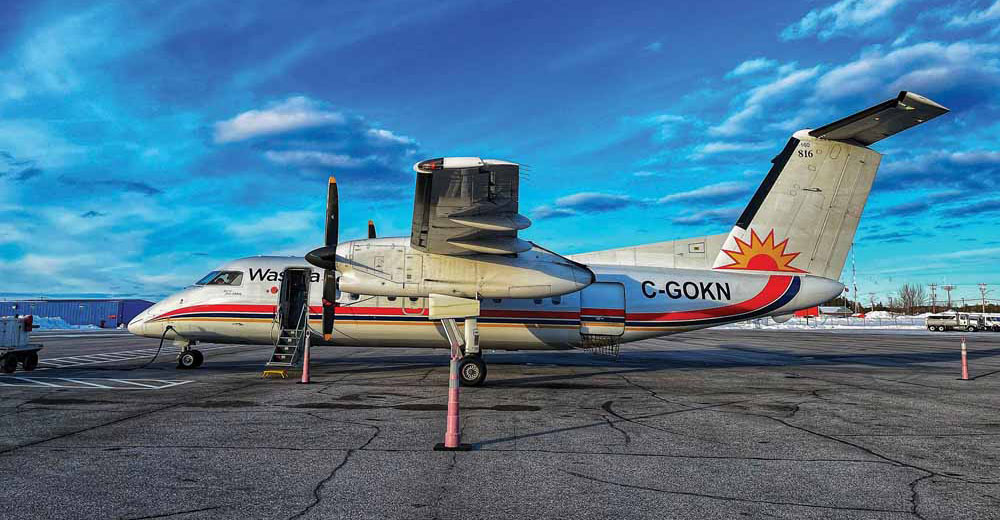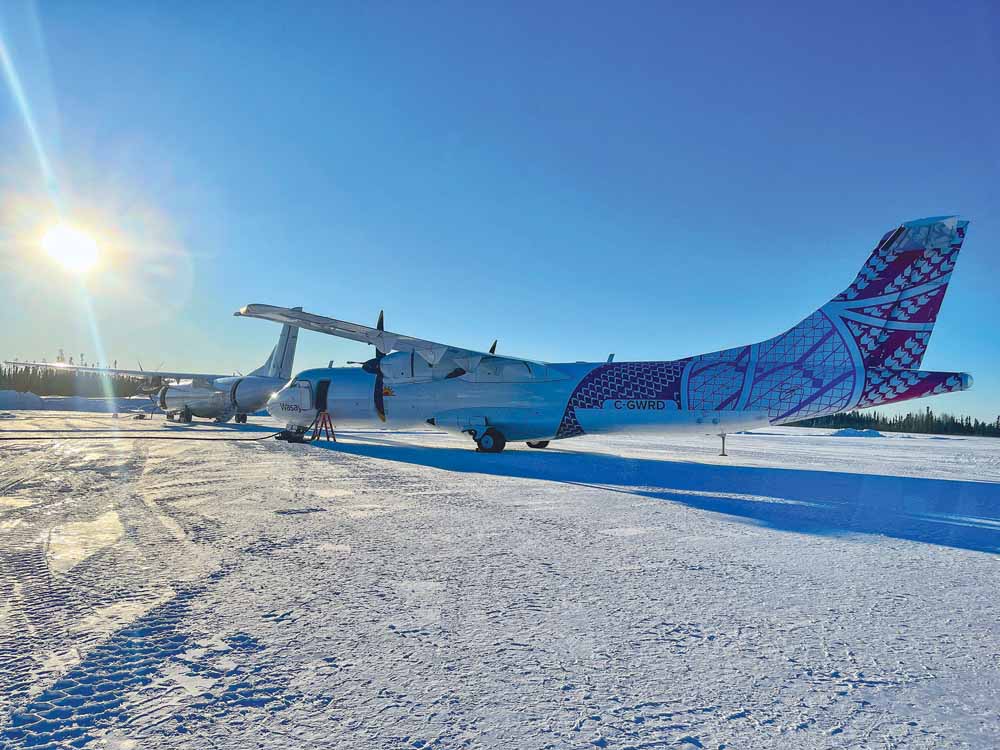Wasaya Airways

A Wasaya Airways Dash 8-102 at Sioux Lookout Airport. Photo: Capt. Prithvi Bharadwaj (Wasaya Airways)
At A Glance
Pilots joined ALPA: 2008
Number of pilots/flightcrew members: 104
Pilot bases: Thunder Bay, Pickle Lake, and Sioux Lookout, Ont.
Hubs/key markets: Northwestern Ontario
Headquarters: Thunder Bay, Ont.
Operations: Wasaya operates primarily in northwestern Ontario and flies on-demand charters as required.
Fleet: Beech 1900s, Cessna Caravan 208Bs, Pilatus PC-12s, Dash 8s, and ATR 42s and 72s
Last year was very productive for the pilots of Wasaya Airways, marked by significant firsts and milestones that showcase growth and strategic foresight. In the summer, the pilot group convened for an inaugural strategic planning session in Thunder Bay, Ont.—a groundbreaking event that laid the foundation for greater cohesion and focus. During this meeting, it became clear that freight pilots would benefit from dedicated communications, leading to the launch of a monthly freight communications initiative. This step ensures that every member’s voice is heard and keeps the lines of communication strong.
Understanding pilot rights and responsibilities under the current contract was also a focus of the strategic planning session. In response, efforts are now being directed toward better educating the pilot group about contract provisions, empowering members with the knowledge necessary for informed decision-making and stronger advocacy.
Adding to the year’s achievements, Capt. James Harding, the pilots’ Master Executive Council chair, was elected ALPA Group C executive vice president. This important role positions Harding as a key liaison between Canadian pilot groups and ALPA’s national leadership, enhancing cross-border collaboration and strengthening the voice of Canadian pilots within the Association.
Moving into 2025, the Wasaya pilot group is stronger, more informed, and more connected than ever, ready to embrace the future with unity and purpose.


